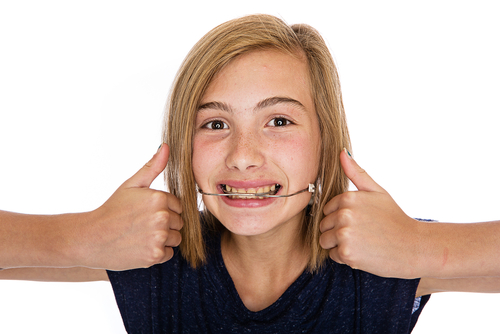Your orthodontist may recommend that you wear headgear braces after viewing a radiographic/ digital image of your mouth. Headgear is supposed to be worn during a certain time of the orthodontic treatment of a client. This article explains what headgear is and how to use it for optimal orthodontic results.

What is Headgear?
The American Association of Orthodontists defines headgear as any type of external appliance that applies external forces on a specific part of the jaws. Headgear is used on patients that are not able to fix their teeth solely using brackets, clear retainers or wires. Headgear is made of wires that are designed to engage pressure both on the inside and outside of the mouth.
Types of Headgear
There are various types of headgear depending on the orthodontic needs of the patient. Retraction headgear, or Class II correction, is used to move the upper jaw. On the other hand, Protraction headgear, or Class III correction, is used to bring the upper jaw forwards while also stabilizing and guiding the lower jaw. The use of headgear is common in children, as their growing jawbones can be more easily corrected.
Each type of headgear has a specific way of being fitted. Facebow headgear uses single strap around the neck with a wire that attach to the front braces on your teeth. On the other hand, J-hook headgear uses wires that attach to braces and straps. This headgear is placed over the patient’s head and neck.
How to Use Headgear
According to Johnson Orthodontics headgear should be used for an average of 12 to 14 hours a day, though this will vary according to the recommendations of your orthodontist care specialist. The duration of your treatment will also depend on the degree of misalignment or crowding of both your upper and lower jaws. Following these rules as they specified by your orthodontist will also determine the duration of time your treatment will last for.
The headgear should be removed when you eat, while you sleep and even while you exercise. Generally, they should be removed for any activity that may lead to the accidental pulling or bumping of your headgear’s parts.
You should also make sure that you brush your tooth regularly to get rid of oral bacteria. Overall, you shouldn’t worry about the work that is involved in gaining your perfect smile because the ultimate result will be worth all the hard work and effort you put in.
Written by Dr. Darren Wittenberger, the best orthodontist Columbia MO has to offer, and owner of his own practice, Advance Orthodontics. Dr. Wittenberger enjoys sharing his expertise to ensure people can maintain the healthiest, straightest teeth possible!
